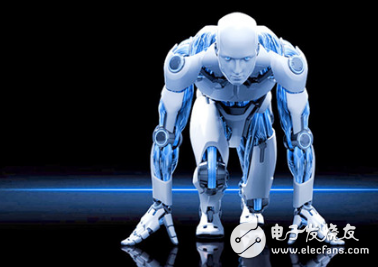Top Ten Forecasts in the Robot Industry in Five Years
With the advancement of the intelligent society, the robot industry has received much attention from the state, and the future robot technology has also made great progress. Many entrepreneurs are also very optimistic about this area. Some institutions have made ten predictions for the future development of the robot industry from 2018 to 2021.
With the development of embedded and cloud-based artificial intelligence (AI), the advancement of robotics has entered a new era. In the new era of RoboTIcs 3.0, the intelligent trend will have a profound impact on industrial robots and service robots...
Robots are increasingly becoming part of everyday life, from manufacturing plants to consumer sales. In order to meet the demand, robotics and artificial intelligence (AI) technology will continue to advance, creating a field called "enabled roboTIcs". In the next five years, a new generation of robots will change the direction of many things.

According to Jing Bing Zhang, Director of Global Robotics Research at IDC, “With the development of embedded and cloud-based artificial intelligence (AI), the advancement of robotics has entered a new era. In this new era of RoboTIcs 3.0, intelligent robots are ubiquitous. Perception and connectivity, network-physical integration, autonomous functions (such as awareness, decision making, learning and adaptation) and more humanized multi-modal interactions. This trend will be for industrial robots and service robots (including commercial With a strong impact on consumption, in order to stay ahead, major robotics vendors have begun to develop and integrate AI functionality into their product development blueprints."
Robot sales grew strongly. According to IDC's survey report, global robots (including drones) and related services will increase from a total compound growth rate (CAGR) of 22.8% from $82.5 billion in 2016 to approximately $230.7 billion in 2021. . Robot systems, system hardware, software, robot-related services, and after-sales robot hardware are all included in this category.
So what are the major development trends in the future of the robot industry? John Santagate, Director of IDC Service Robotics, shared his views, including key market drivers, and robot development and deployment over the next five years.
Santagate said: "As the capabilities of technology continue to expand, robots have the ability to do more. In the future, they will be able to perform tasks that were previously impossible for robots to perform."
Venture capital (VC) players are also optimistic about this trend, investing more robot companies than before. According to the Robot Report, in 2014, $340 million in VC funds helped in 27 transactions. The following year, VC spent nearly $1 billion on 43 transactions, and last year it quickly increased to nearly $2 billion on 128 transactions.
In the five years from 2018 to 2021, IDC made ten predictions for industrial, commercial and consumer applications:
Prediction 1: Robotic applications will increase by a third by 2019; about 60% of Global 2000 high-tech manufacturers are expected to deploy industrial robots in manufacturing operations.
Prediction 2: By 2020, 45% of newly assembled industrial robots will be equipped with at least one intelligent function, such as predictive analysis, health awareness, self-diagnosis, peer learning or self-awareness.
Prediction 3: By 2021, the emergence of intelligent robotic agency services for robot supervision and coordination will effectively stimulate the entire industrial robot industry and increase efficiency by 30%.
Prediction 4: By 2021, 30% of Global 2000 manufacturers will deploy Nete robotic systems, increasing productivity by 10-20%.
Prediction 5: By 2020, the global mobile safety robot market will grow by nearly 300%, and in terms of enhancing human safety, it is estimated that about 30% of mobile safety robots will be equipped with onboard drones for necessary deployment.
Prediction 6: By 2019, 25% of mobile robots will deploy the ability to add modular components and implement multiple applications on the same mobile platform, increasing productivity and efficiency by 30%.
Prediction 7: By 2020, approximately 30% of the top 100 retailers will adopt or test robots in stores, reducing order costs by 20%.
Prediction 8: By 2021, 45% of mobile robot deployments will be provided through the “Robot-as-a-Service†(RaaS) approach, allowing devices to quickly scale up and down during demand fluctuations and shift robot deployment from capital expenditures to Operating costs.
Prediction 9: By 2020, UAV deployments in the energy industry, such as software, hardware and services, will help map and plan infrastructure in oil, gas and coal mining areas, as well as investigate and monitor thousands of acres of crops. It is estimated that its output value will reach 1 billion US dollars.
Prediction 10: By 2021, the consumer robot market will grow exponentially, and the next generation of AI-based robots will reduce the focus on physical tasks, participate more in the teaching and interaction of family members, and begin to enter the family, thereby improving The quality of human life.
Fire Resistant Sleeve,Fireproof Sleeves,Fire Resistant Hose Sleeve,Fire Proof Sleeve
Longkou Libo Insulating Material Co.,Ltd. , https://www.liboinsulation.com